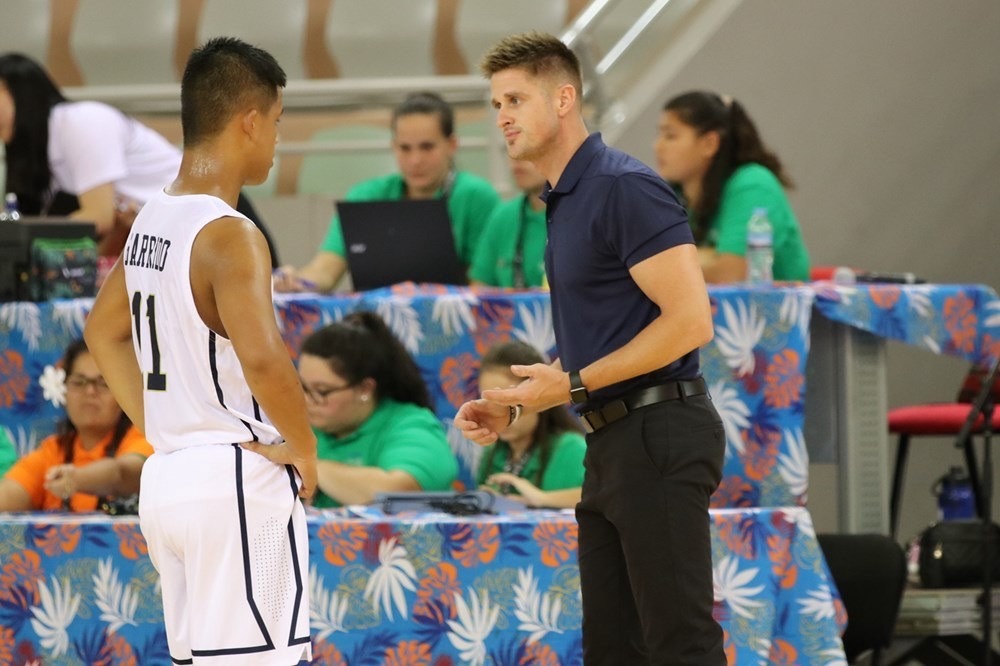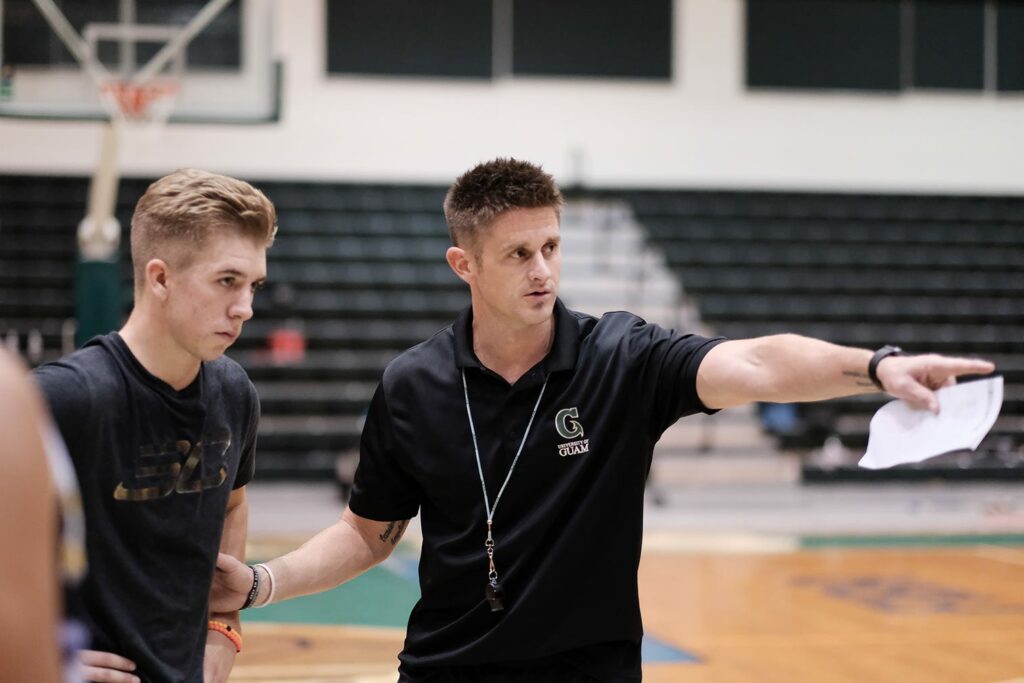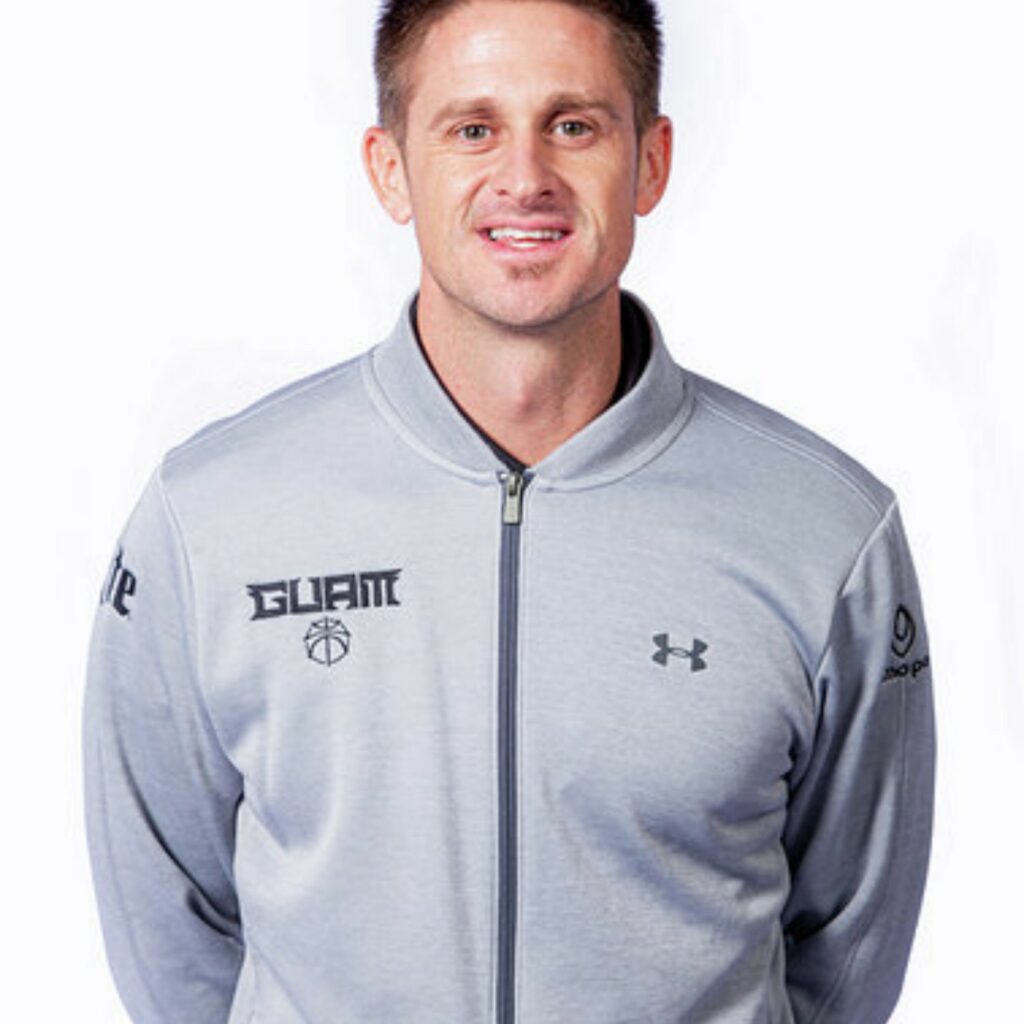

by Brent Tipton (Head Coach u17 Guam Men’s National Team)
After practice, you sit down at your desk, sigh a big breath of frustration, and reflect on your display of anger towards your players during practice. As you reflect, your self-talk whispers guilt to you, confirming, “I don’t ever want to coach like that again.”
We all have had moments in our coaching journey where we have faltered in our behavior as coaches, and with some introspection, these negative behaviors can be directly related to how to respond to athletes’ mistakes.
Athletes are human, and due to the physical and cognitive load athletes perform under, mistakes become inevitable. Our responses to athletes’ mistakes will either be transactional or transformational. If we plan for athlete error and understand athlete error is part of learning, responding to athlete’s mistakes will be transformational with a growth mindset as opposed to transactional with resentment and anger.
“I don’t ever want to coach like that again.”
Brent Tipton
By building transformational relationships, we can create a transformational learning environment that provides answers to how to respond to athletes’ mistakes

Nurturing transformational relationships with our athletes emphasizes loving the athlete with empathy, consistency, and truth. In order to build this transformational relationship with an athlete, coaches must first know how to manage their power.
We will either operate transactionally with our positional power, or we will invest transformationally through our personal power. We must be self-aware of how exercising our Positional Power and Personal Power influences the psycho/social component of the athlete..
| Positional Power | Personal Power |
|---|---|
| Coach exploits his or her position over the athlete to influence the athlete. | Coach values his or her relationship with the athlete to influence the athlete. |
| Manipulating an athlete to get what I want in the next 10 minutes. | Inspiring a player to take control of his own character development, where results might not be visible for another 10 years. |
| Uses fear and manipulation as motivator. | Uses relationships and inspiration as a motivator. |
| Handicaps athlete to rely on the coach to make decisions. | Encourages player automaticity and self-regulation. |
| Provides feedback through prescribing statements by coaching TO the athlete | Provides feedback through guided questions by coaching WITH the athlete. |
| Causes dependence on coach or independence from coach | Causes interdependence with teammates and coach |
| Spotlights athlete’s mistakes | Spotlights athlete’s effectiveness |
| Views athletes by what they can do for coach | Views athletes by what coach can do for athletes |
| Coaches the athlete | Coaches the person |
The method with how we respond to an athlete’s mistakes takes not only Emotional Intelligence but the application of Emotional Intelligence: Emotional Agility.
Emotional Intelligence involves the ability for coaches to self-regulate their emotions to consistently respond correctly to athletes’ mistakes with empathy and truth.
Emotional Agility involves the ability for coaches to possess the self-awareness that their Emotional Intelligence will be tested uniquely and differently by each athlete and in each teachable moment. Applying Emotional Agility during an athlete’s mistake means we know how to respond to his or her error with patience, calmness, and maturity.
Emotional Intelligence is understanding that I can influence athletes through my behavior when responding to their mistakes.
Emotional Agility is understanding how to adjust my behavior to provide truth and empathy to each individual athlete in each unique learning outcome.
Emotional Agility involves exhibiting open and inviting body language to enhance non-verbal communication, demonstrating active and reflective listening to acknowledge an athlete’s voice, and speaking effort and growth-mindset language to inspire continual athlete development.
We know how to respond to his or her error with patience, calmness, and maturity
Brent Tipton

When we apply Emotional Agility in how to respond to athletes´mistakes, we enter a Learning Partnership with him or her.
A Learning Partnership is a collaboration between the athlete and the coach where both are actively involved in the athlete’s development process. This Learning Partnership is not coaching to an athlete or over an athlete, but it is coaching with the athlete, a holistic approach that is human to human.
The deciding factor on if this Learning Partnership will function is athlete trust. Intentionally building deep relationships with our athletes leads to a better learning environment, which promotes better reception of our feedback during an athlete mistake.
The Art of Coaching is found in these transformational relationships with our athletes, taking a deep interest in them as people first, thus making the things we teach them that much more impactful. We must teach rather than expect performance. We must motivate rather than manipulate.

In a healthy Learning Partnership, we are giving our knowledge to the athlete, not being the keeper of knowledge. Correction is not criticism. Coaching is not criticism. Do our athletes know that coaching is not criticism when we intervene to correct athlete error? If athletes and coaches both viewed the coaching process as a Learning Partnership where the coach values athlete input, and the athlete knows the heart behind why the coach corrects, mutual trust is built and a transformational relationship thrives.
The deciding factor on if this Learning Partnership will function is athlete trust.
Brent Tipton
The outcome of creating a Transformational Learning Environment is to be Error Positive. The learning environment we create in which athletes perform is a determinant of how they will learn and what they will learn. Athlete mistakes are traditionally viewed by coaches negatively and become a splinter in the coach-athlete relationship.
Mistakes are a valued part of learning in an Error Positive Learning Environment and become an opportunity for the coach to implement transformational coaching principles. The learning environment must be safe for an athlete to fail. Athletes want to know they can make mistakes and if they do make a mistake that they will be coached and not judged. How do we design a transformational, error positive learning environment? How to respond to athletes’ mistakes?
Athletes want to know they can make mistakes and if they do make a mistake that they will be coached and not judged.
Brent Tipton
When designing an Error Positive Learning Environment that views athlete mistakes as a part of learning it’s important to practice the Law of the Vital Few. Also known as the 80/20 rule, this theory suggests that we should intentionally practice the 20% of things the lead to success and focus on those things 80% of the time. The design of our learning environment and what the athlete practices should lead to skill mastery thus limiting mistakes.
An athlete will not reach skill mastery if our practice design is a smorgasbord of drills or what the athlete will do 20% of the time during performance. Not only does a coach have the choice of a transformational response to an athlete’s mistake, but also have the power to create a session that leads to skill mastery by applying the Law of the Vital Few. Applying the Law of the Vital Few might not be a direct response to an athlete’s mistake, but it is a discernment of how practice design influences athlete learning.
Our Emotional Agility and transformational responses to athlete’s mistakes will be tested every session. Regulating our emotions during athlete error is imperative if we desire to have a transformational response. A transactional response to athlete error involves reacting egotistically with anger, resentment, and even sarcasm.
An athlete will not reach skill mastery if our practice design is a smorgasbord of drills.
Brent Tipton
Although humor is a great tool to ease an athlete’s stress level, sarcasm is hurtful and invokes an insecurity onto the athlete that could shake his or her self-confidence. A transformational response to athlete error is to normalize error. Normalizing error does not mean that we ignore athlete error altogether, but it’s a methodology for how we will respond to athlete error. Mistakes must be made by an athlete to learn.
Planning for athlete error not only emotionally but pedagogically, allows you to use the error as a means to teach holistically. This communicates to the athlete that your learning environment is a safe place to be creative, but also that you have a framework to correct athlete error when it occurs.
Our non-verbal reaction to an athlete’s mistake through our body language might be the biggest influencer in how our athletes view their mistakes. If our athletes are to view correction by the coach as not criticism, then we must correct athlete error calmly, firmly, and maturely. The long-term effect of normalizing athlete error becomes the lens for how the athletes view their mistakes as a part of learning and the amplifier for how they hear and respond to your correction.
Do we realize that athletes are going to forget what we teach them in the stresses of performance? It is hypocritical and unrealistic of us to expect that athletes will retain to long-term memory every detail we teach in practice and perform them flawlessly during competition. Admitting the Role of Athlete Forgetting does not imply that we do not keep athletes accountable to a high standard or high level of play, it shows a commitment to the transformational response that we have the empathetic understanding that athletes are human and are capable of forgetting. If we don’t accept the Role of Athlete Forgetting our reaction to athletes’ mistakes will be transactional by responding with anger, resentment or by placing blame on the athletes for their mistakes.
A transformational response to athlete error is to normalize error.
Brent Tipton
Coaches play a role in the athlete forgetting when the learning environment involves a dominance of direct instruction and feedback through prescriptive statements as opposed to posing questions to athlete mistakes using external cues or short descriptive phrases. The longer our instruction and amount of feedback to an athlete the more we contribute to the Role of Athlete Forgetting. It’s not how much you instruct; it’s how long your instruction takes. We must coach in soundbites, not soliloquy in order for our athletes to retain information to store into their long-term memory. In order to help athletes retain information and combat the Role of Athlete Forgetting, it’s best to pose questions to guide the athletes to self-awareness in self-regulating as opposed to intervening with direct, prescribed instruction by stating what the athlete did wrong.
The high-performance behaviors of athletes that lead to success are a direct result of how the coach has designed and created the learning environment. The purpose of our feedback to our athletes is a teaching endeavor that enables athletes to visualize what we see as coaches. In order to be consistent with an Error Positive Learning Environment we must utilize transformational feedback. Transformational feedback uses the least antagonistic pedagogy to approach athlete error. The obvious answer to what is transactional feedback is coach yelling prescribing statements of what the athlete is doing wrong. What does transformational feedback look like and sound like?
Understanding the Role of Athlete Forgetting helps us approach our feedback deliberately, knowing the athlete will not retain and store into long-term memory everything we teach. To accomplish this, our feedback should focus on one thing for the athlete to think about and improve upon. Providing multiple teaching points forces the athlete to remember more and this overload of information leads to the athlete overthinking, resulting in under-performance and a looming mistake. Once the feedback is given, the athlete must have the opportunity to apply the feedback. Applying the feedback will help the athlete store the feedback into working memory which creates a habit that will be accessed at a later performance time. Using the Power of 1, resolves the potential for an athlete to make a mistake. Although the Power of 1 is not a direct response to an athlete’s mistake, it is a proactive approach to understanding that the learning environment we create is directly applicable to athlete performance.
Transformational feedback to athletes’ mistakes must be an everyday discipline.
Do we provide transformational feedback to our athletes mistakes with Emotional Agility only on the days athletes perform well and we are in a good mood?
Applying the feedback will help the athlete store the feedback into working memory which creates a habit that will be accessed at a later performance time.
Brent Tipton
We must have daily emotional consistency in our response to athlete error. We also should never complete a practice session where we haven’t given some type of feedback to every athlete.
Do we only provide transformational feedback to the athletes we like and ignore transformational feedback to the athletes we dislike?
If we have built nurturing, transformational relationships with our athletes, they will be more receptive to our feedback when they make a mistake.
If we care about an athlete we will provide constructive correction to his or her mistake.
If we do not care about an athlete our transactional response to his or her mistake will be sarcasm or criticism.
Athletes pick up on our tendencies of who we give transformational feedback to and who we give transactional feedback to.

A powerful quote by Katrina Merriweather that we can apply to transactional feedback to athlete error is, “A moment on the lips can be a lifetime on the heart.”
Transactional responses to athlete error becomes reactive criticism that is a result of us trying to protect our ego.
Transactional coaching is criticism. Transformational coaching is correction. Feedback that is criticism spotlights the athlete’s error. Feedback that is correction spotlights how the athlete can correct and improve upon the error. To become aware of our transactional responses to athletes, track your critique. Whether this is literally or mentally, mark every time you provide feedback to an athlete that only describes the mistake and not how to fix the mistake.
A coach’s clap communicates to the athletes that you are judging their decisions and effort independent of the outcome.
Brent Tipton
This process will help your self-awareness in making the shift from delivering transactional feedback to transformational feedback to an athlete’s mistake. A moment of transactional feedback, a fit of anger, sarcasm, or passive aggressive response due to an athlete’s mistake might be a moment on your lips, but our egotistical response can be etched into the heart of our athlete for his or her entire life.
A non-verbal cue that goes a long way with athlete’s confidence is the “coach’s clap.” What will you profusely praise despite athlete failure? A coach’s clap communicates to the athletes that you are judging their decisions and effort independent of the outcome. Not only is a coach’s clap a transformational response to a mistake, it is an outward display of approval by the coach, acknowledging to anyone else watching that the coach is encouraging the athlete to try again.
At the heart of transformational coaching lies the passion to help our athletes holistically develop. The one thing that will test our coaching philosophy daily is athlete’s mistakes. Whether these mistakes are behavioral, emotional, technical, or tactical, we must use our Personal Power to build and maintain transformational relationships. The results of transformational coaching might be immediate or they may take years or decades to come to fruition. As we are on our life-long learning quest as coaches, in a craft that is never meant to be mastered, consider a transformational response to an athlete’s mistakes.
Thank you, SportCoach, for the opportunity to share my heart in how I want to be transformational in my athlete’s lives. Coaches, I hope these thoughts will stimulate thought as you form your philosophy of how to respond to athlete’s mistakes.
Twitter: @coachbtipton
Youtube: Channel
Thank you coach Tipton for your article about how to response to athlete´s mistakes
Related Posts
Jenaro Díaz breaks down in detail, in a series of chapters, all the aspects of Australia’s game that have made
n the last three years, Sportcoach has been positioned itself as a reference developing content for coaches. First in Basketball,
Get this free basketball coaching course and discover how our digital academy works.